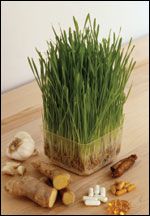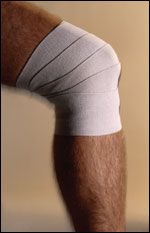Publication
Article
Pharmacy Times
Coagulation Counseling
Author(s):
Dr. Garrett is manager of the Health Education Center at Mission Hospitals in Asheville, North Carolina.
Warfarin and Herbal Interactions: Where Is the Evidence?

A number of herbal products have been implicated in possible interactions with warfarin. These suspected interactions are based largely on case reports, but few clinical studies actually support the findings in these case reports. Cranberry, fish oil, garlic, gingko, ginseng, St John?s wort, and vitamin E are some of the more popular supplements with reported interactions. Clinical studies performed with each of these agents showed an effect on warfarin only with American ginseng (decreased international normalized ratio [INR]) and St John?s wort (decreased INR). Although little evidence has been presented regarding these potential problems, interactions are not out of the question, and clinicians should monitor closely for INR changes and increased adverse effects, such as bruising or spontaneous bleeding. Suspected interactions can be reported to an herbal registry that is available at www. clotcare.com.
High INR May Pose Less Risk than Low INR
Physicians caring for patients who require anticoagulation are concerned about bleeding risk and tend to underdose their patients as a result. A number of studies have shown that patients managed by physicians tend to spend more time below the therapeutic range than in it. A meta-analysis of the literature reported combined risk of bleeding and thrombosis of 10.6% per year at an international normalized ratio [INR] of < 2; 4.3% per year at an INR of 2 to 3; 7% per year at an INR of 3 to 5; and 52.3% per year at an INR of > 5. Keeping patients at a goal range of 2 to 3 (or 2.5-3.5 for some conditions) is the best strategy; however, the strategy of keeping patients subtherapeutic to minimize bleeding risk should be rethought, whereas the risk of adverse events triples when the INR is < 2.
Warfarin Benefits May Outweigh Risks in Patients Who Fall
Concern about falls is the primary reason warfarin is underprescribed in elderly patients. A recently published review of primary literature in patients with atrial fibrillation (AF) indicates that the risk of falls alone should not automatically disqualify a patient from warfarin treatment. Clinical studies evaluating warfarin and aspirin efficacy in AF, as well as studies evaluating anticoagulation and falls, elderly patients, and bleeding were considered for inclusion in the review. Selection emphasis was placed on randomized studies of AF and those evaluating anticoagulation and falls.
Only about 50% of patients with an indication for warfarin actually receive therapy. Falls are most often cited as the reason for not using anticoagulants in an elderly patient. Three risk-benefit analyses have been performed, however, and all found that its benefits outweigh its risks even in patients who fall. Anticoagulation education has been shown to reduce the risk of bleeding in the elderly and should be a vital part of warfarin management. Patients can be counseled to use a cane or walker if necessary or to make changes in their home environment (eg, remove area rugs) to reduce the chance of falling.
New Oral Anticoagulant Shows Promise

Patients who have hip or joint replacement are at increased risk of developing blood clots after surgery. Preventive therapy with warfarin or enoxaparin is usually given for a period of 2 to 4 weeks after surgery. Three recent studies using rivaroxaban, an oral direct factor Xa inhibitor, compared with enoxaparin showed greater reduction in blood clots.
In the first study, 2531 patients were treated with either therapy for 10 to 14 days. Primary outcomes were development of deep vein thrombosis, pulmonary embolism, or death within 13 to 17 days of surgery. The primary outcome occurred in 9.6% of patients on rivaroxaban versus 18.9% of patients treated with enoxaparin. In the second study, 2509 patients were randomized to treatment with enoxaparin for 10 to 14 days versus 31 to 39 days of the Xa inhibitor. After being followed for 42 days, 2% of rivaroxaban-treated patients had a problematic outcome, compared with 9.3% in the enoxaparin group. The last study enrolled 4541 patients to receive either drug f o r 35 days. During the 36-day period following surgery, 1.1% of rivaroxaban patients experienced one of the primary outcomes, compared with 3.7% of enoxaparin patients. Bleeding rates were the same in both groups in all studies. The results of these studies may soon make postoperative clot prophylaxis much easier, whereas rivaroxaban is an oral drug that requires no monitoring. Rivaroxaban is not yet approved in the United States, but a new drug application is expected to be filed later this year.







